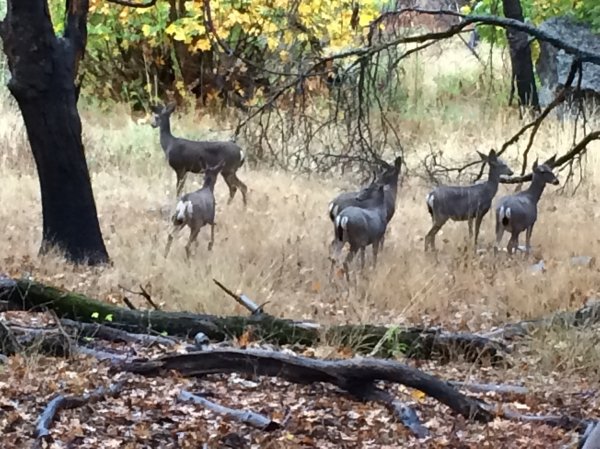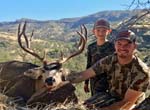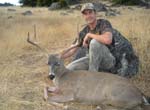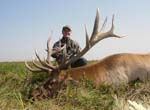There is no simple answer simply because ANY deer you kill near Susanville is going to have some blacktail blood--the question is how much. Blacktails typically congregate on the west side of the Sierra's during breeding season, while mule deer tend to congregate to the east. However, there will always be strays (partly because of their confused genetics), and so the two interbreed on both sides of the mountains. Those that do not migrate entirely out of the mountains mix genes in the high basins (Indian Valley, for example) where they over-winter.
As a result, every local mule deer will carry at least some of the genetics of the blacktail. These hybrids will carry these genes further to the east, etc. What prevents the eventual hybridization of all deer across all western states is the fact that blacktail genes are less well adapted for life in the high desert, and so they eventually die out. This explains the higher percentage of black-tipped rather than black-striped deer in eastern populations.
Of course, the gradual disappearance of black-striped tails does not necessarily mean that all blacktail genes are eliminated. For this reason, any attempt to distinguish between mulies and blacktails becomes somewhat arbitrary--such Boone and Crockett's decision to use I-5 as the divisiding line between the two.
Rather than focus on differences between the two, it may make more sense to focus on similarities. Both mulies and blacktails are evolved from the same ancestral species. Variation has occurred largely in response to different environmental pressures along the coast in comparison to those existing inland. Rather than think of these as two different species (which they are, as a consequence of the habit of biologists to plop creatures into neat categories) that sometimes mix, it makes more sense to think of them as one species that maintains slight differences across its range as a result of different survival needs.
I am pretty sure of this, 'cause they all shoot good, and taste the same.

 Western Wildlife Adventures
Western Wildlife Adventures
 Urge 2 Hunt
Urge 2 Hunt
 G & J Outdoors
G & J Outdoors
